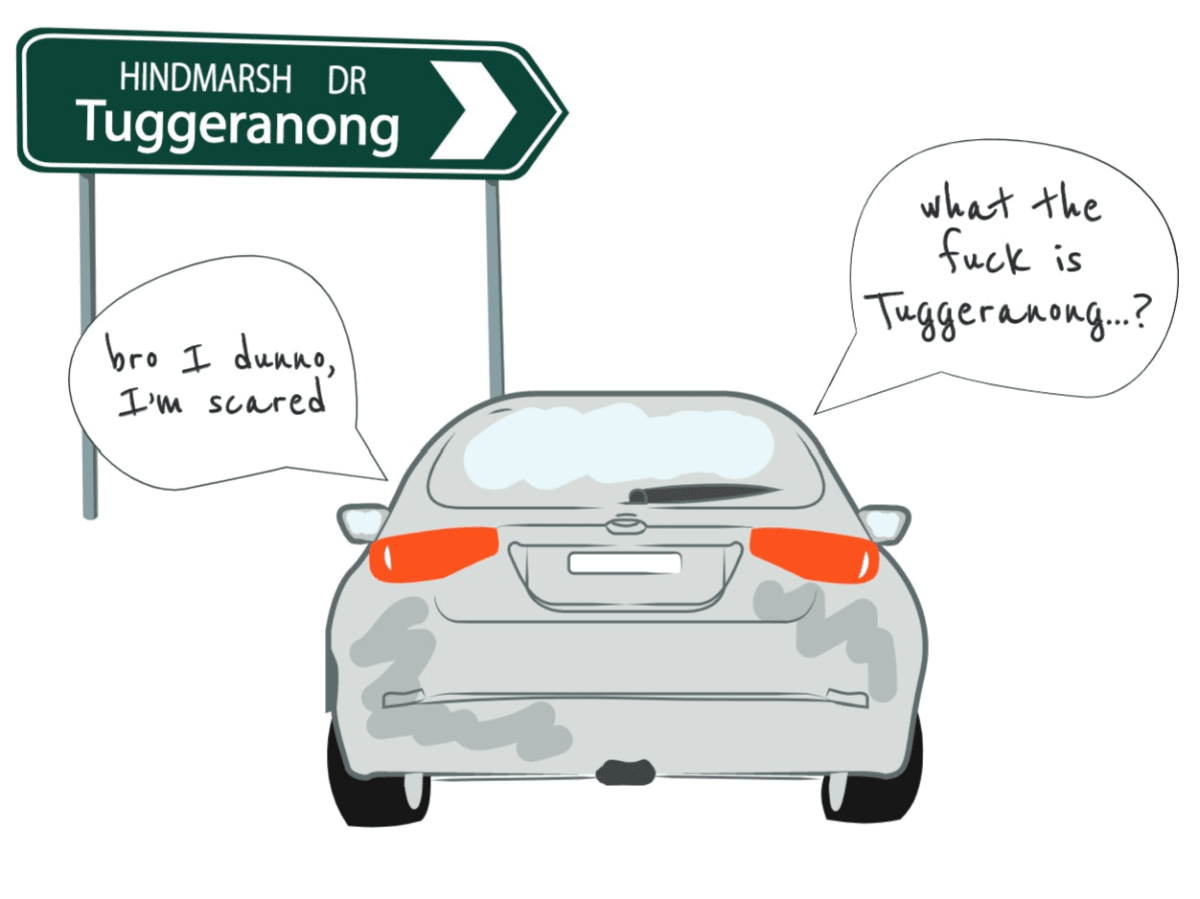The ANU boasts a worldly and truly global body of students and academics that hail from around Australia and all over the world. Students (used to be able to) venture out across the globe on exchange and academics came to the ANU from places as far as Japan and Canada. However, it has always struck me that there is one very close geographic blind spot for most ANU students to visit. This region is Canberra’s Southside.
Starting at the lakeside neighbourhoods of Yarralumla and Barton and stretching down as far as Fyshwick and Tuggeranong, Canberra’s southern district is much larger than its northern counterpart. Yet, if your only guide was the average ANU student, you would be hard pressed to find someone with practical knowledge of the inner south, let alone a place as far flung as Tuggeranong.
The ‘iron curtain’ of interest for a lot of students falls just south of Parliament House. It is not unusual for an ANU student to live in Canberra for the four years typical of an ANU double degree and never once venture past the northern banks of Lake Burley Griffin. Wedged between Black Mountain and Mount Ainslie, ANU’s immigrant population consists primarily of Sydneysiders and Melbournians living in the familiar confines of the Inner North.
You could say that these urbanites may just enjoy the proximity to a central business district with similar concrete and glass monoliths to downtown Sydney or Melbourne. Being an Inner Northerner myself and having lived within multiple locations all a 30-minute walk from Lonsdale St, I think that there is a more complex answer.
It’s easiest to start with the assertion that a significant number of ANU students begin their Canberra experience living in the Inner North. There are around 11,000 undergraduate students at ANU and several thousand places in undergraduate student residential colleges, so it is likely that they begin and remain as Inner Northerners during their time here. Before becoming a virtually online university, ANU was in the Inner North and it was easier for students to live close by.
There is a further cultural element to it. The Inner North has a connection with students that other areas of Canberra do not have. The presence of completely vegan cafés on Lonsdale street and pubs with Thursday specials say more about their target audience than ACT demographic data ever could. One trip to that hallowed establishment residing in the Sydney Building would make any sane university student attempt to live within a 15 minute drunk walking distance to Civic. Similar to Melbourne’s Brunswick and Sydney’s Newtown, the image and reputation of the Inner North is intimately tied with the activities of students, specifically consuming niche herbivorous café food and getting drunk.
Known as Canberra’s university, ANU could more specifically claim to be the Inner North’s university. Some may disagree, and I think that an argument could be made for suburbs like the Kingston Foreshore to fall under the list of student suburbs. Perhaps a Tuggeranong campus may be needed to round off the Canberra experience. Yet the point remains— the identity of ANU is intimately linked to Canberra’s Inner North.
Think your name would look good in print? Woroni is always open for submissions. Email write@woroni.com.au with a pitch or draft. You can find more info on submitting here.
We acknowledge the Ngunnawal and Ngambri people, who are the Traditional Custodians of the land on which Woroni, Woroni Radio and Woroni TV are created, edited, published, printed and distributed. We pay our respects to Elders past and present. We acknowledge that the name Woroni was taken from the Wadi Wadi Nation without permission, and we are striving to do better for future reconciliation.
